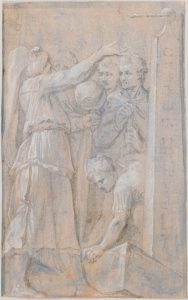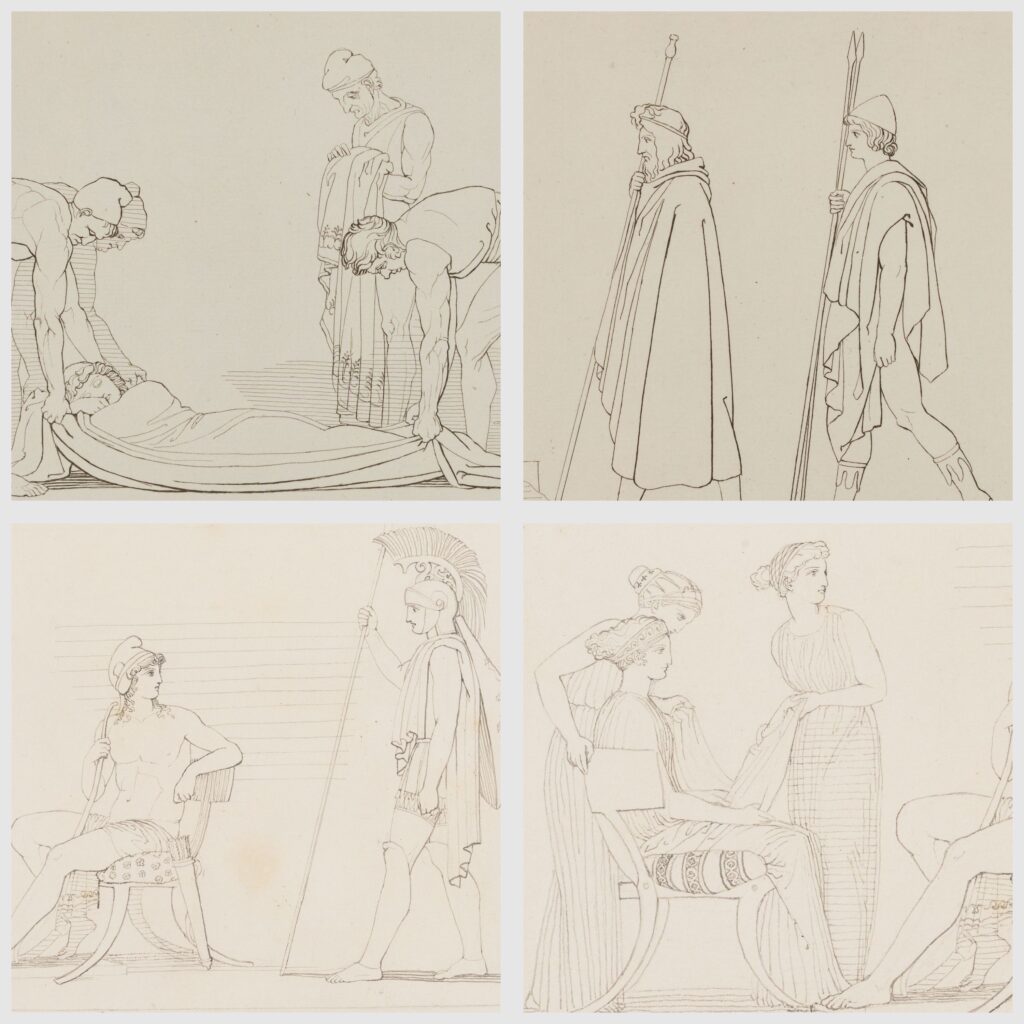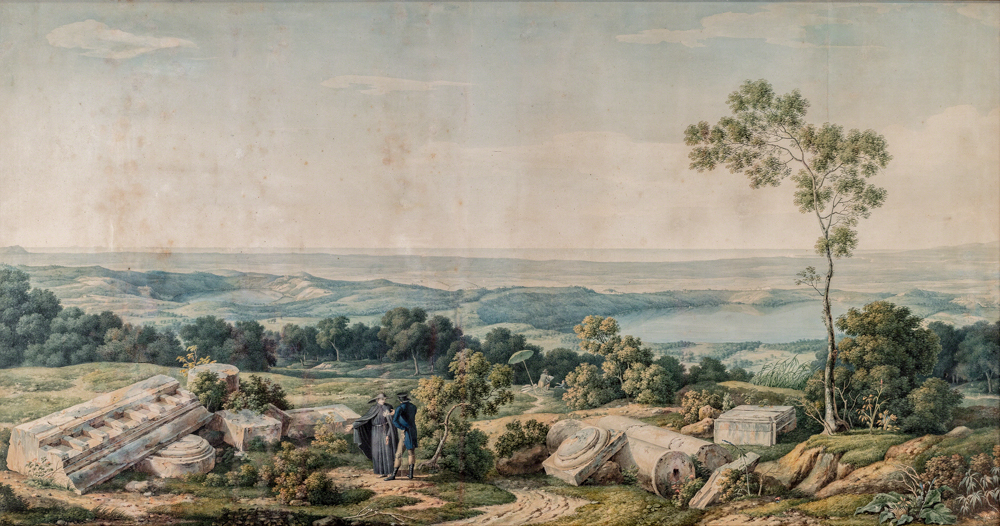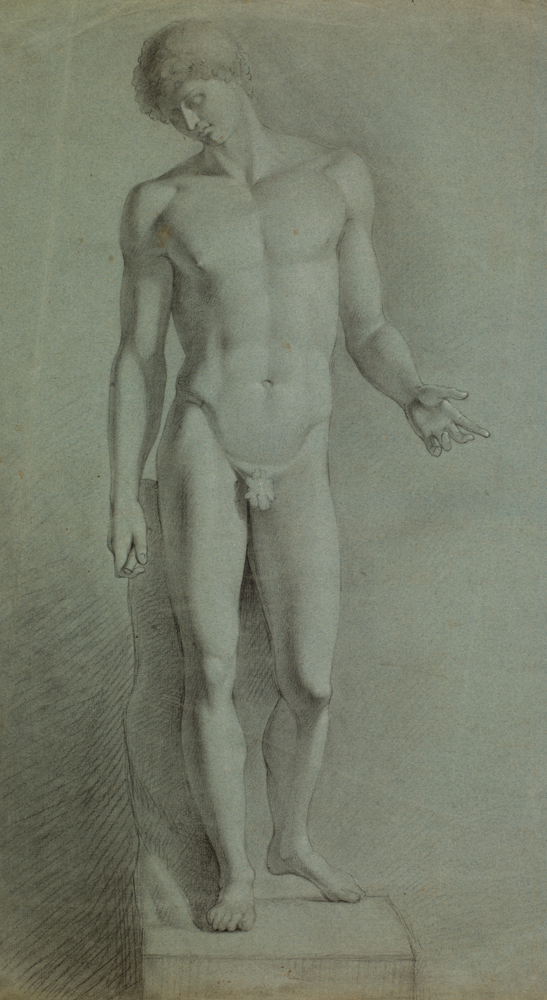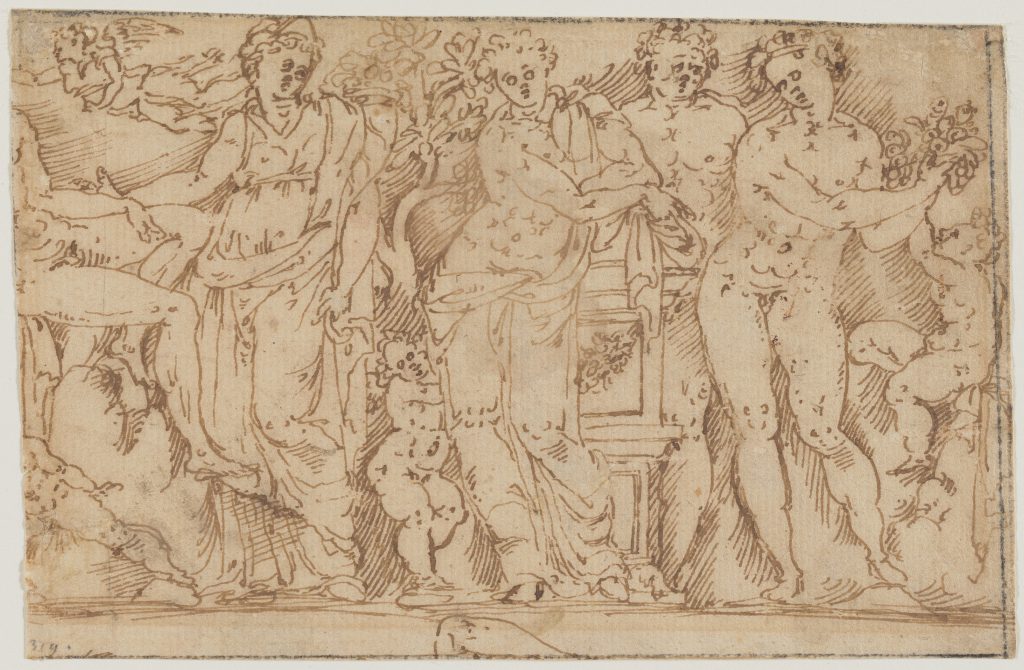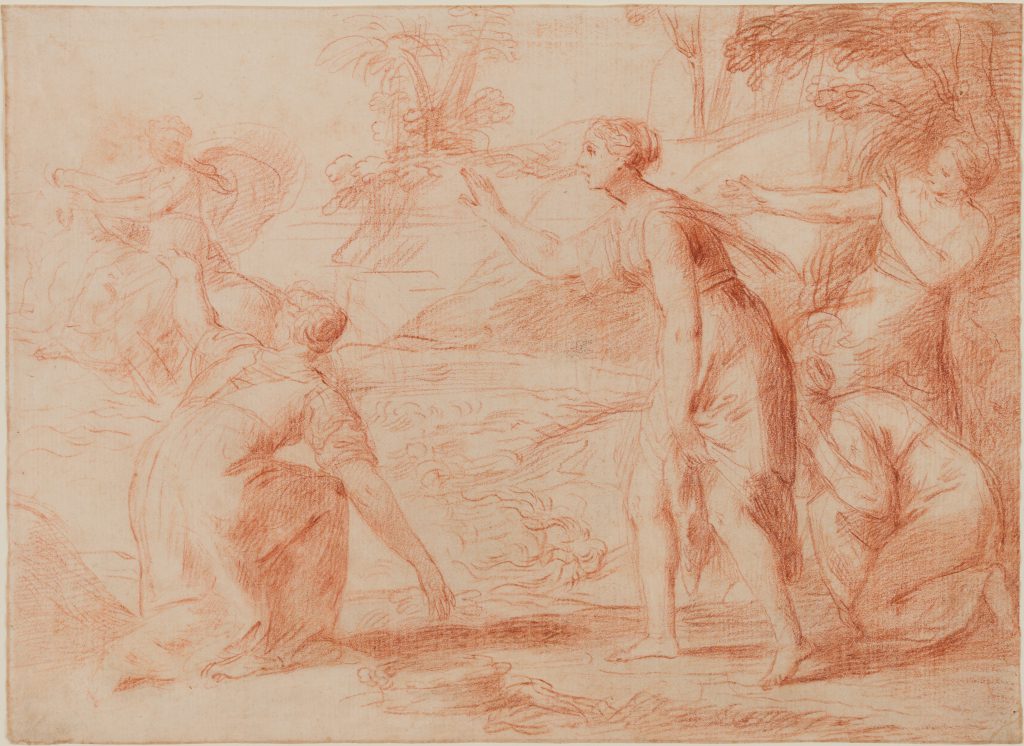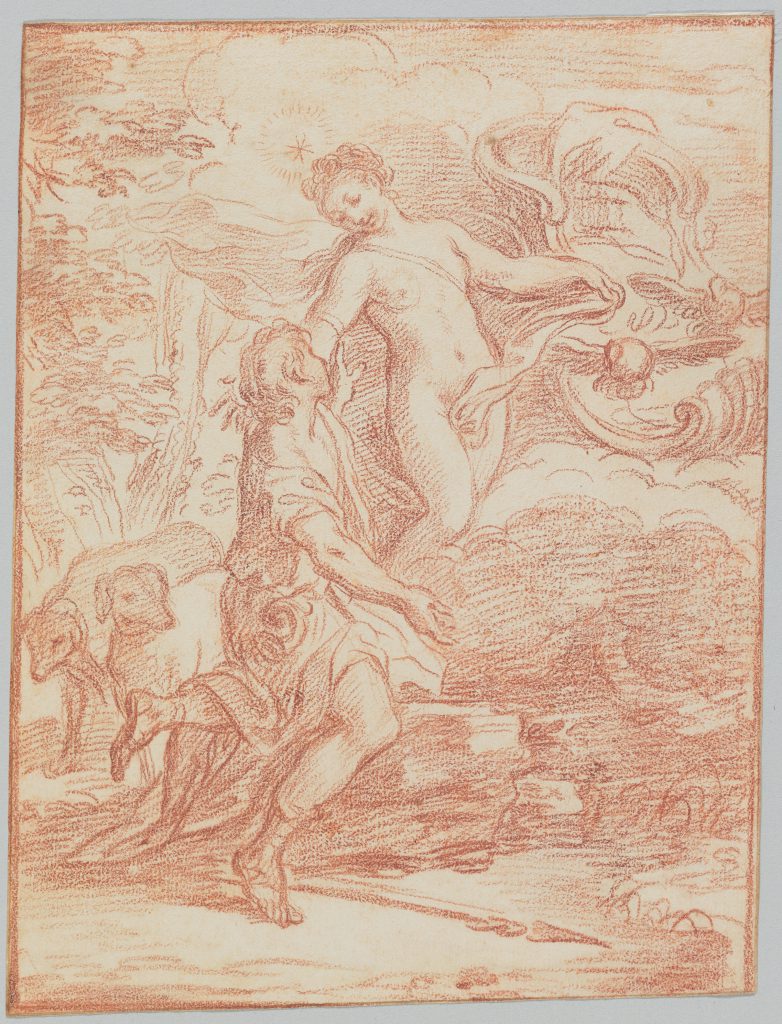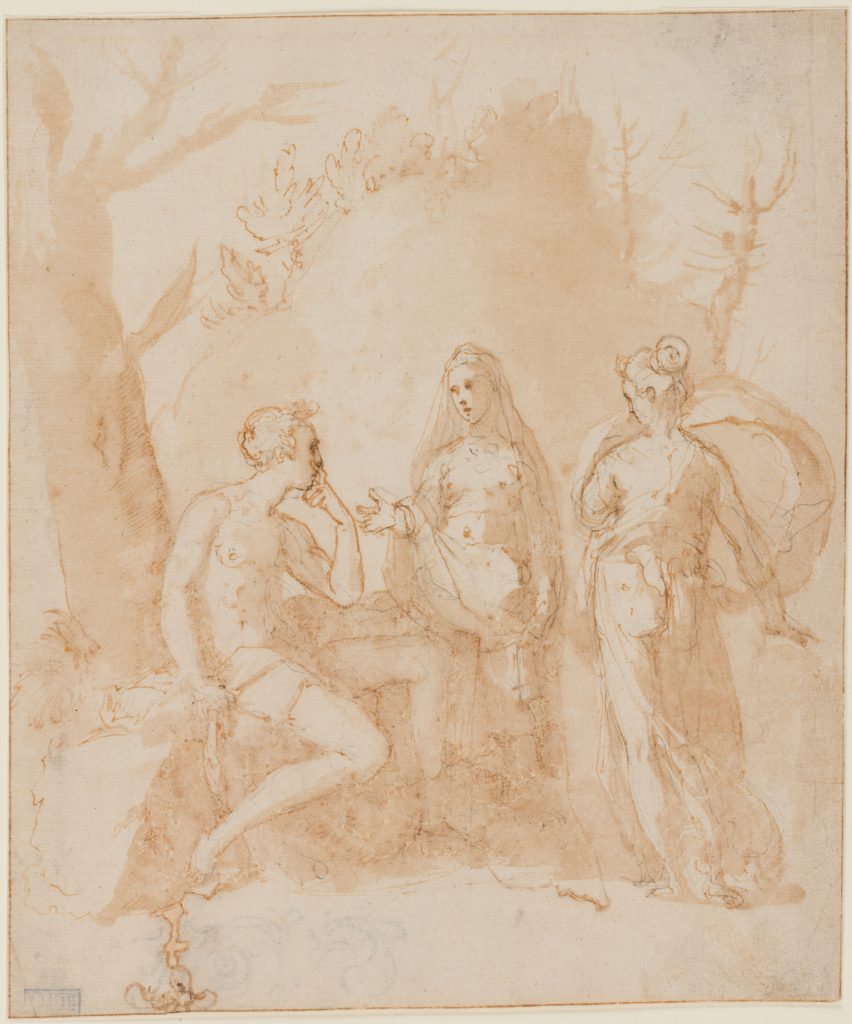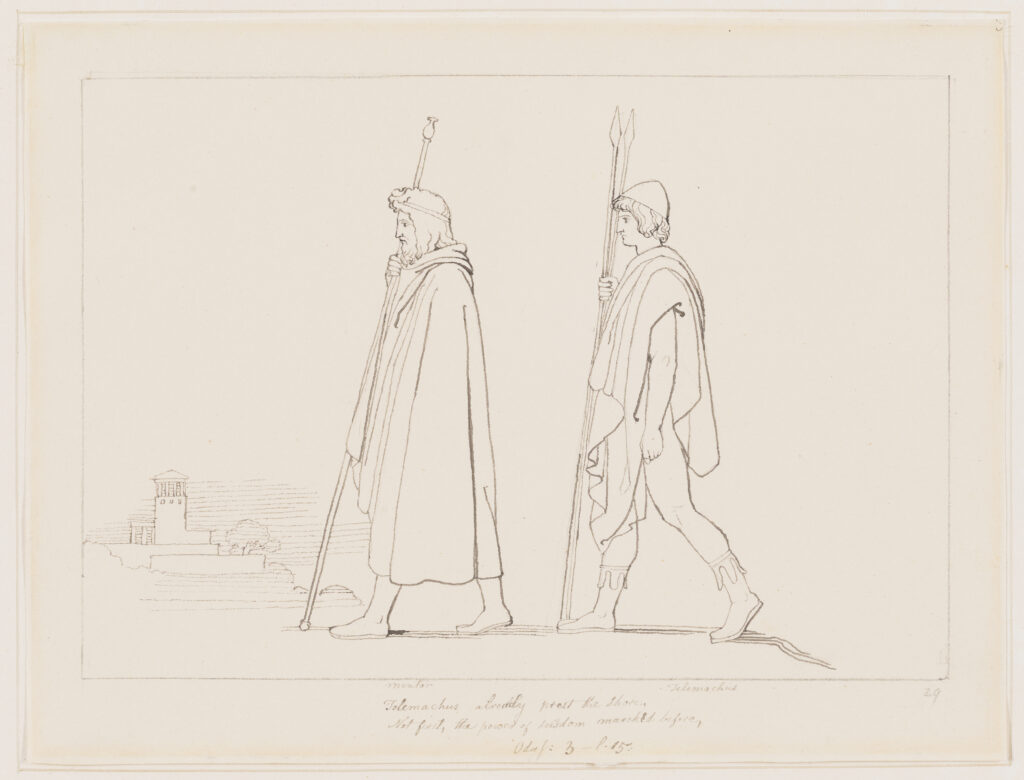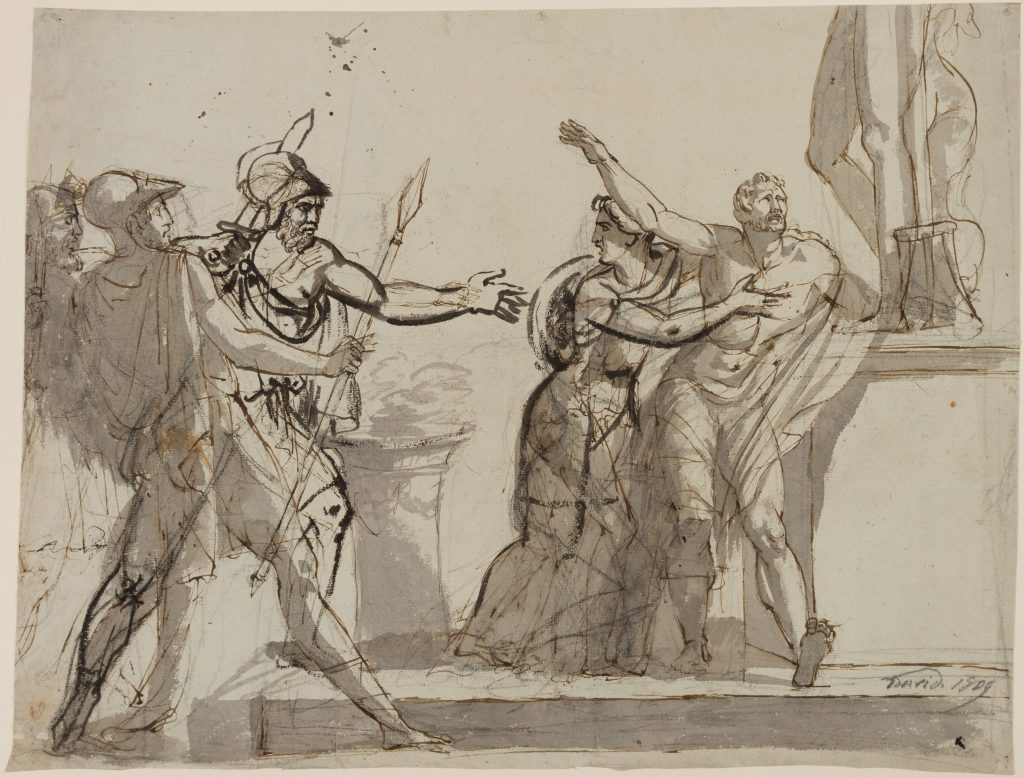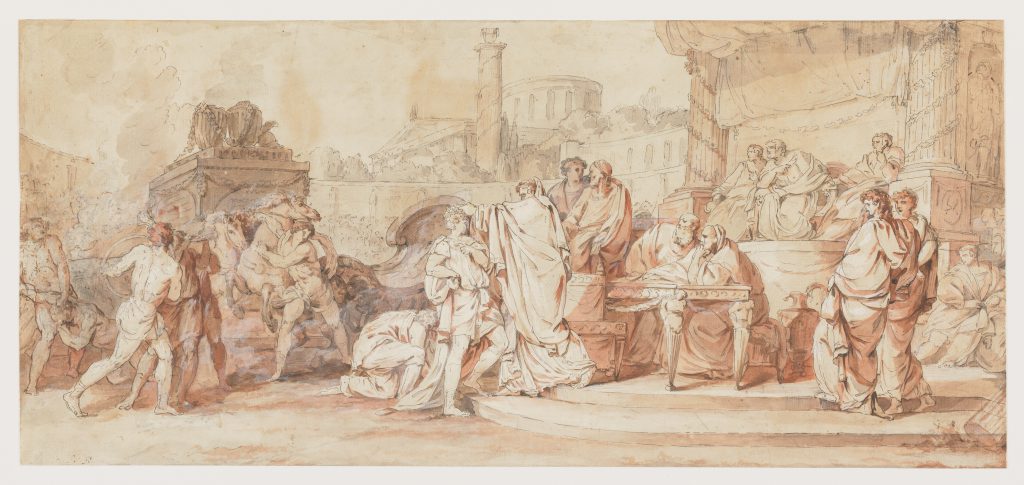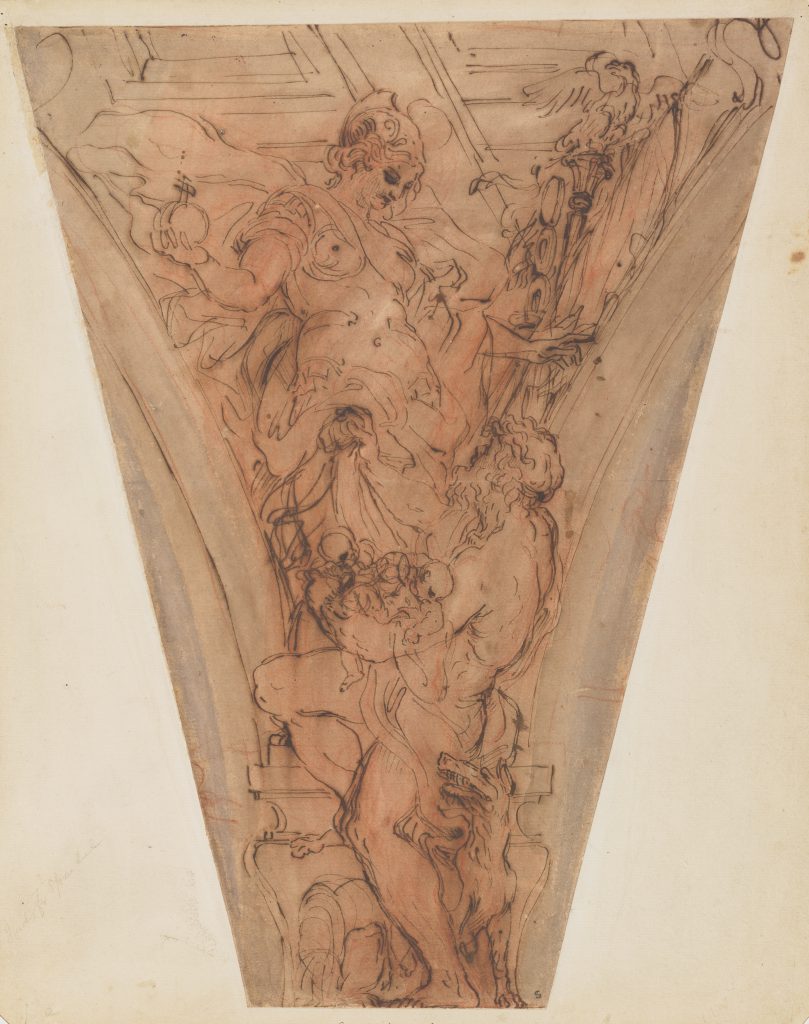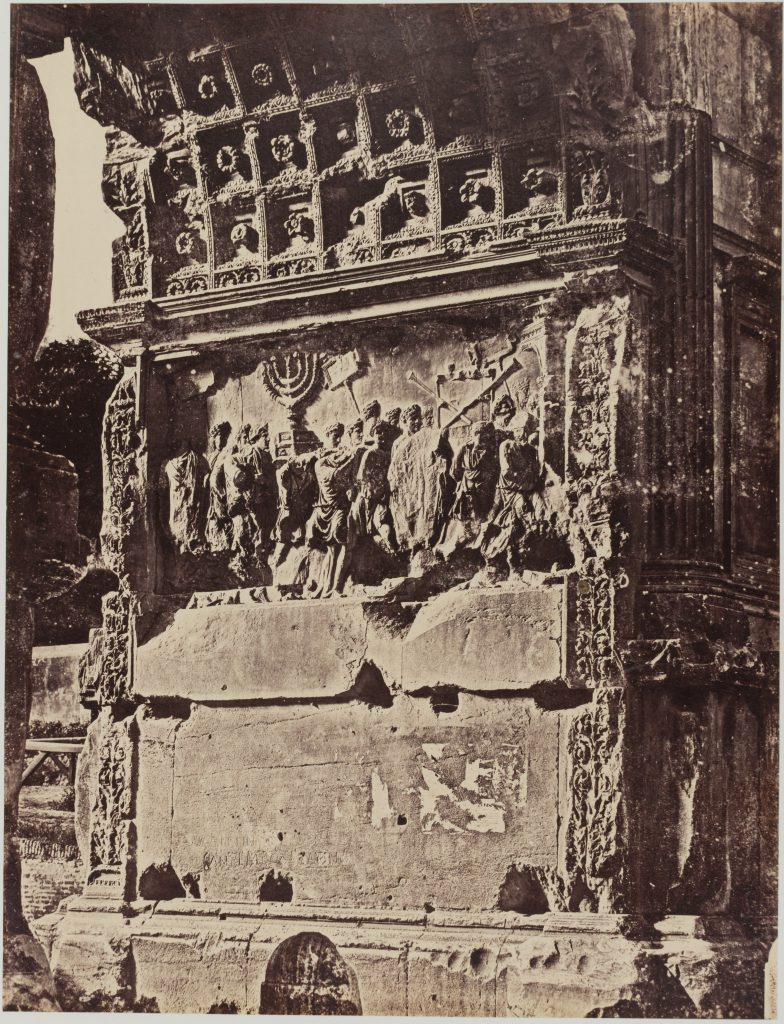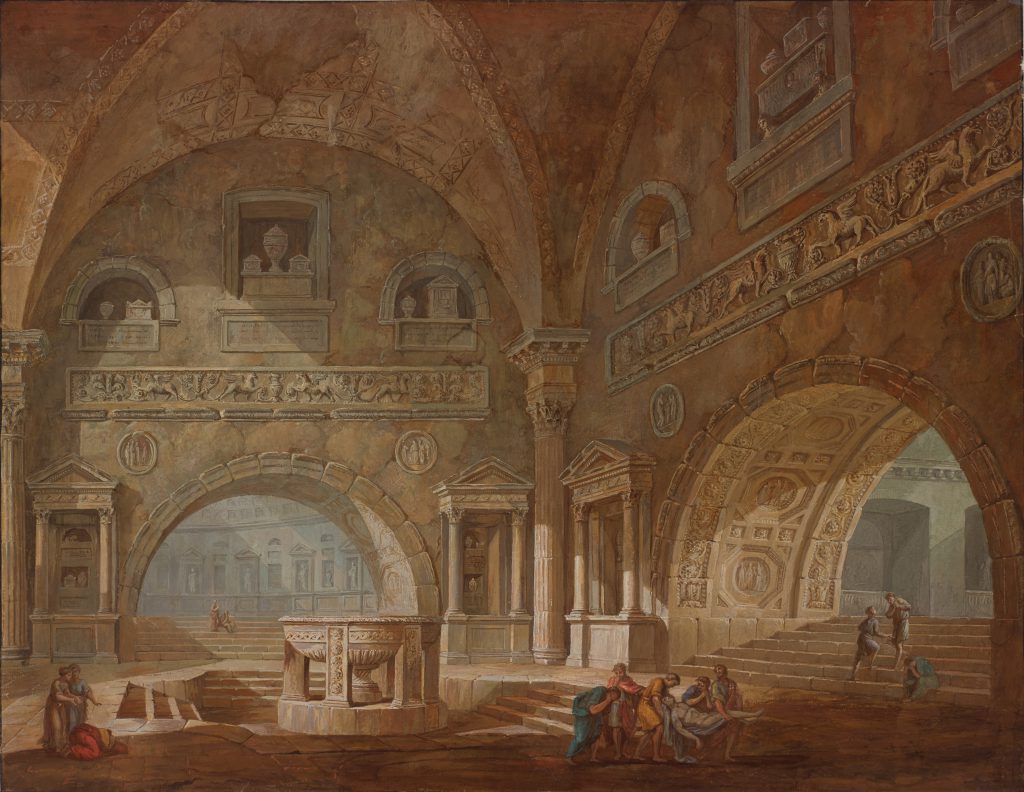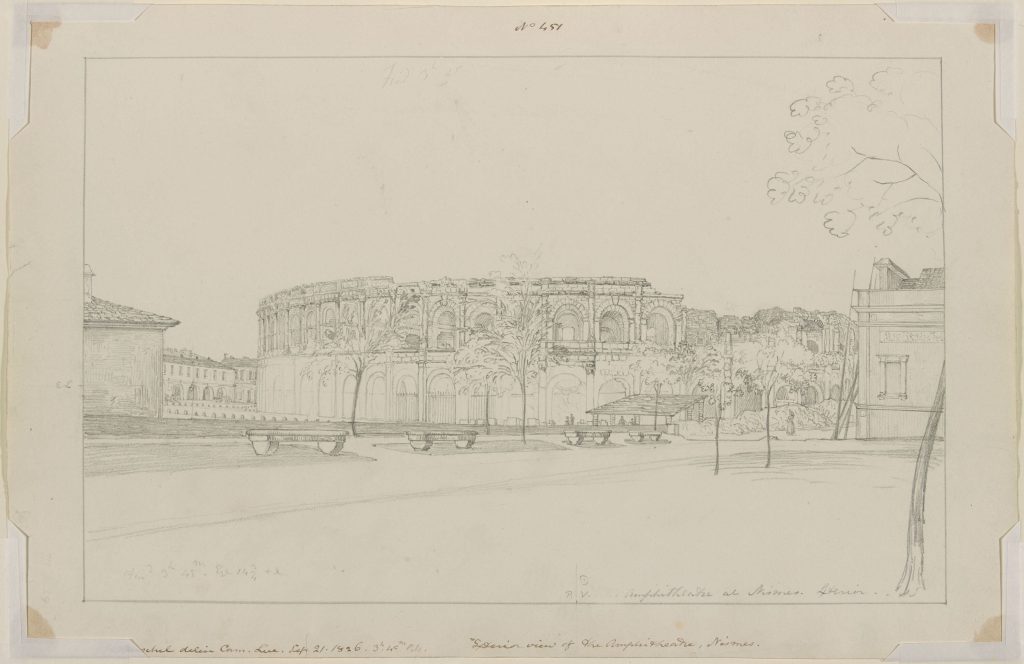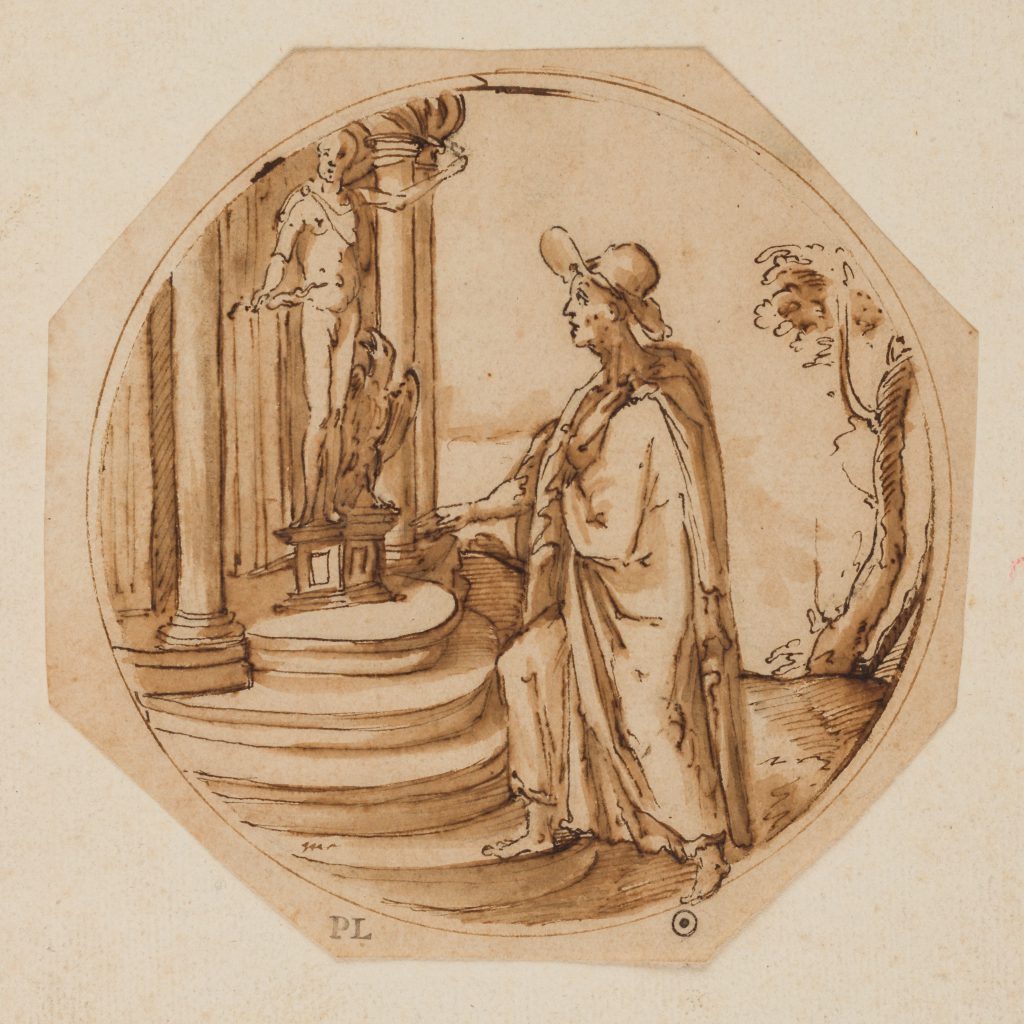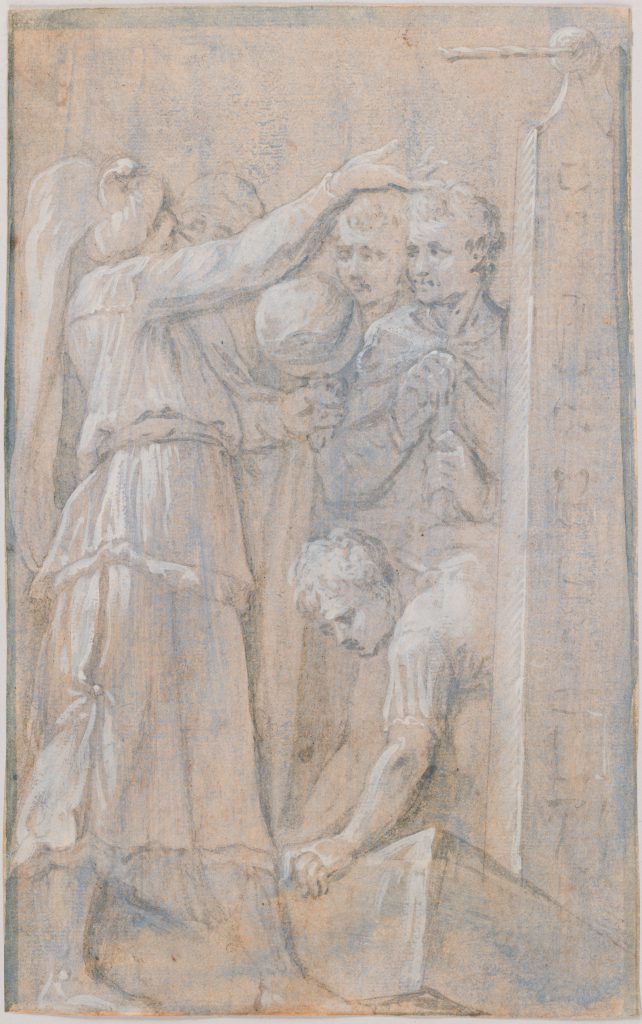
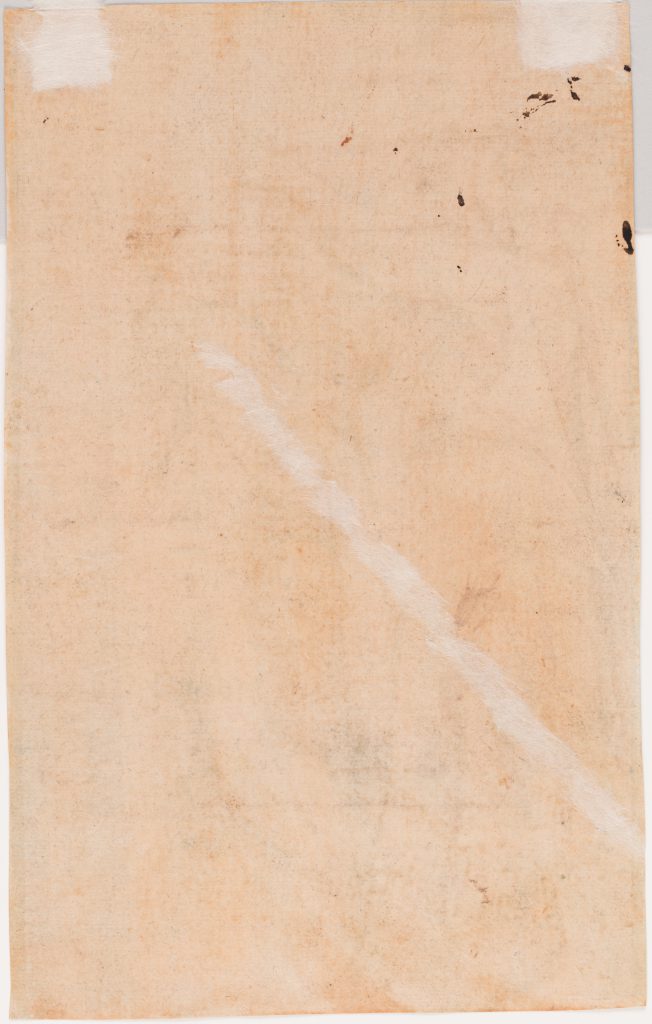
Bequest of the Honorable James Bowdoin III
1811.58Five figures converge around an obelisk and a couple of large blocks of carved stone at its foot. The four-sided obelisk bears Renaissance hieroglyphs and features a small sphere at its pinnacle. A mysterious object flares past the finial, with a twisted tail that stems from a small node in front of the obelisk’s sphere. An astronomer or augur holds up what may be a celestial globe and gestures toward an enigmatic phenomenon in the sky. Once visible but now faded, the block at bottom right bears the inscription in Roman capitals: TRIDIS, possibly an obscure reference to Rome’s Christian present.
The figures are just as mysterious as the setting. The astronomer/augur sports a turban with a forward curling crest and a long veil that flows down his back. He appears to wear buttoned leggings, a split skirt buttoned at knee height, an overfold (as in a peplos), a belt, and an upper garment with sleeves fitting tight at the wrist. A young man with tousled hair grasps the TRIDIS stone with both hands. The lappets cascading from his left shoulder imply a cuirass. Directly behind him, an older figure leans sagely on a staff and two more partial figures look on, the leftmost perhaps wearing a helmet. The final mystery held by this sheet appears at the right: a shadow of the obelisk and capping sphere, as if it were being cast on a nearby flat surface by a brilliant light.
Bowdoin’s sheet may reference the legend of the good omen of “Caesar’s Comet,” which signaled his deification after his assassination. Ancient writers tell us that during the funeral games held after Caesar’s death in his honor in 44 BCE, one of the most famous comets of antiquity appeared in the sky for seven days and was so bright that it was visible during the day. Understood to be the soul of Caesar, the comet came to be called Sidus Iulium (Star of the Julians) or Caesar’s Comet. The apparition was interpreted as a good omen for Rome. A separate legend regarding Caesar’s ashes grew from comments by Pope Leo IX, who recounted that Caesar’s remains were enclosed within the orb at the top of the obelisk. However, in 1586, when Pope Sixtus V undertook the immense project of moving the obelisk, the sphere was opened and no ashes were found.
As scholars have long noted, much of Polidoro’s work for Roman facades needs to be carefully studied to understand its complex subject matter. These friezes also need to be assessed for what they meant to the families commissioning them. In the sixteenth and seventeenth centuries, Polidoro was immensely renowned, and studies after his façade grisailles were standard assignments for young artists learning the illusion of painting a three-dimensional object on a flat surface. Fortunately, because of that use, hundreds of copies after Polidoro’s facades remain with us, while the facades themselves have almost completely vanished.
The landscape of early America included many an obelisk as a marker of significant sites. Jefferson designed his own tomb stone to be a plain obelisk with an inscription. Countless other funerary obelisks sprouted up in American graveyards by the early nineteenth century. The august, pure form of the obelisk also became a favorite for commemoration of significant battles and virtues. The Washington Monument stands as the most colossal example of the type, but monuments to Revolutionary War battles and Civil War conflicts boast their share of obelisks great and small. While the symbols of freemasonry may have encouraged use of Egyptian symbols, the excavations of Egyptian sites by Napoleon’s armies and the fashion for Egyptian motifs in Europe probably exerted a more forceful influence on American tastes.
Collector
The son of the wealthy merchant and second governor of Massachusetts, James Bowdoin II, Bowdoin figured among a small group of leading figures who recognized the value of art in fostering enlightened ideals and philosophical contemplation among a budding republic.
